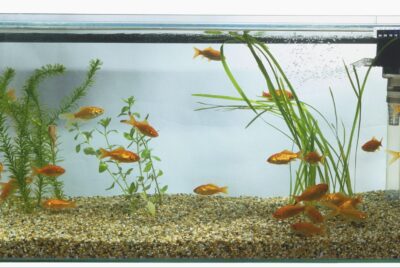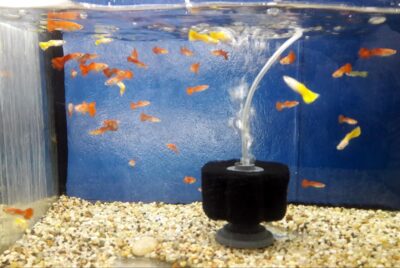Nano Protein Skimmer
As an avid fishkeeping enthusiast, I understand the importance of maintaining a healthy and thriving aquatic environment. One crucial aspect of aquarium maintenance is ensuring proper filtration. In this article, I will delve into the fascinating world of nano protein skimmer, discussing their significance, factors to consider when choosing one, top options on the market, setup guidelines, troubleshooting common issues, maintenance tips, and complementary filtration methods. So, let’s dive in and explore the wonders of nano protein skimmers together.
Introduction
In the realm of fishkeeping, nano tanks have gained immense popularity due to their compact size and aesthetic appeal. However, maintaining water quality in these smaller aquariums can be challenging. That’s where nano protein skimmers come to the rescue. These specialized devices play a pivotal role in maintaining optimal water conditions by efficiently removing dissolved organic compounds, proteins, and other impurities. With their compact design and powerful performance, nano protein skimmers offer an effective solution for nano tank filtration.
What is a Nano Protein Skimmer?
A nano protein skimmer is a compact filtration device designed specifically for small aquariums, typically ranging from 10 to 30 gallons in size. It utilizes a process called foam fractionation to remove organic waste from the water column. The skimmer generates fine bubbles within a reaction chamber, attracting and binding organic compounds. These bubbles, along with the waste material, rise to the top of the skimmer and are collected in a collection cup, effectively removing them from the aquarium system.
Importance of a Protein Skimmer in a Nano Tank
Maintaining excellent water quality is vital for the health and longevity of the fish and other inhabitants in a nano tank. Nano protein skimmers excel in removing organic compounds, such as excess food, fish waste, and decaying matter, which can lead to poor water conditions if left unaddressed. By efficiently removing these impurities, protein skimmers help reduce the risk of ammonia spikes, nitrate accumulation, and algae outbreaks. They also contribute to clearer water, promoting better light penetration and a healthier aquatic environment overall.
Factors to Consider When Choosing a Nano Protein Skimmer
When selecting a nano protein skimmer for your aquarium, several factors should be taken into account to ensure optimal performance and compatibility. Let’s explore the key considerations:
Size and Compatibility
Choose a protein skimmer that suits the size of your nano tank. Ensure that the skimmer is designed specifically for small aquariums and can handle the volume of water effectively. Consider factors such as the footprint of the skimmer and its compatibility with your tank’s dimensions and setup.
Design and Installation – (Nano Protein Skimmer)
Look for a skimmer with a compact and efficient design, allowing it to fit seamlessly into your nano tank. Consider whether it is a hang-on-back (HOB) skimmer or an in-sump skimmer, depending on your tank’s setup. Ease of installation, adjustment, and maintenance should also be considered.
Efficiency and Performance
Evaluate the skimmer’s efficiency and performance. Look for features such as adjustable air intake, bubble size control, and a collection cup that’s easy to remove and clean. Opt for a skimmer that offers efficient foam fractionation, ensuring the removal of organic compounds and impurities.
Noise Level – (Nano Protein Skimmer)
Consider the noise level of the skimmer, especially if your nano tank is placed in a quiet area. Look for skimmers that operate silently or have noise-reducing features to maintain a peaceful environment.
Maintenance and Ease of Use
Choose a skimmer that is easy to maintain and clean. Look for models with removable parts, accessible reaction chambers, and user-friendly designs. A skimmer that simplifies routine maintenance tasks will save you time and effort in the long run.
Setting up a Nano Protein Skimmer – (Nano Protein Skimmer)
Proper setup and installation of a nano protein skimmer are crucial for optimal performance. Let’s walk through the essential steps:
Placement and Installation
Choose an appropriate location for the skimmer within your nano tank. Ensure that it is positioned near the water surface to allow efficient skimming. Follow the manufacturer’s instructions for installation, considering whether it is an HOB or in-sump skimmer.
Adjusting and Fine-tuning – (Nano Protein Skimmer)
After installation, adjust the skimmer to achieve the desired foam production. Fine-tune the air intake and water level in the reaction chamber to optimize skimming efficiency. Monitor the skimmer closely during this process to ensure proper functioning.
Break-in Period
Allow the skimmer to go through a break-in period, typically lasting a few days to a week. During this time, the skimmer may produce excessive foam or fluctuate in performance. This is normal and will stabilize over time.
Troubleshooting Common Issues with Nano Protein Skimmers
While nano protein skimmers are generally reliable, occasional issues may arise. Here are some common problems and their solutions:
Excessive Micro Bubbles
If your skimmer produces an excessive amount of microbubbles, it may indicate an issue with air intake, water level, or adjustment. Check these factors and make necessary adjustments to reduce the number of bubbles in the aquarium.
Inconsistent Skimming
If your skimmer’s performance fluctuates or skimming is inconsistent, ensure that the skimmer is clean and free from obstructions. Check for clogs, debris, or excess waste in the reaction chamber, impeller, and air intake.
Overflowing Cup
An overflowing collection cup may occur if the skimmer is over-skimming or if the water level in the reaction chamber is too high. Adjust the water level and ensure that the collection cup is properly positioned and emptied regularly.
Maintenance Tips for Nano Protein Skimmers
Regular maintenance is essential to keep your nano protein skimmer functioning optimally. Here are some maintenance tips to follow:
Regular Cleaning
Clean the skimmer regularly to remove accumulated waste and debris. Rinse and scrub the collection cup, reaction chamber, and any removable parts using aquarium water or a mild cleaning solution. Avoid using harsh chemicals that could harm the skimmer or the tank’s inhabitants.
Replacing Parts and Consumables
Periodically inspect and replace worn-out parts and consumables, such as air stones, impellers, and O-rings. Follow the manufacturer’s guidelines for replacement intervals to ensure consistent performance.
Calibration and Maintenance Schedule
Calibrate your skimmer periodically to maintain accurate performance. Refer to the manufacturer’s instructions for calibration procedures. Additionally, establish a maintenance schedule for your skimmer to ensure routine cleaning, adjustment, and inspection.
Enhancing Nano Tank Filtration with Other Methods
While nano protein skimmers are highly effective, combining them with other filtration methods can further enhance the water quality in your nano tank. Consider the following complementary filtration techniques:
Mechanical Filtration
Utilize mechanical filters, such as filter floss, sponge filters, or filter socks, to trap large particles and debris. These filters help to prevent clogging and prolong the life of your skimmer.
Biological Filtration
Incorporate live rock, live sand, or other biological media to foster beneficial bacteria growth. These bacteria assist in breaking down ammonia and nitrite, contributing to a stable and healthy nitrogen cycle.
Chemical Filtration
Supplement your filtration system with chemical media, such as activated carbon or phosphate remover, to remove dissolved impurities and pollutants. Chemical filtration can help combat algae growth and maintain water clarity.
Conclusion
In conclusion, nano protein skimmers are indispensable tools for maintaining pristine water quality in nano tanks. Their efficient removal of organic waste and impurities significantly contributes to the health and well-being of aquarium inhabitants. By considering factors such as size, design, efficiency, and maintenance, you can select the perfect nano protein skimmer for your setup. Remember to follow proper setup procedures, troubleshoot common issues, and perform regular maintenance to ensure optimal skimmer performance. And don’t forget to explore additional filtration methods to further enhance the water quality in your nano tank.
Frequently Asked Questions – (Nano Protein Skimmer)
Q: Can I use a protein skimmer in a freshwater nano tank?
A: Yes, protein skimmers can be used in freshwater nano tanks. Although they are more commonly associated with marine or saltwater setups, protein skimmers can still effectively remove dissolved organic compounds and other impurities in freshwater aquariums.
Q: How often should I clean the collection cup of my nano protein skimmer?
A: The frequency of cleaning the collection cup depends on the skimmer’s performance and the amount of waste produced in your tank. Generally, it is recommended to empty and clean the collection cup once it’s about 1/3 to 1/2 full. Regularly monitoring the skimmer’s performance will give you a better idea of how often the cup needs to be cleaned.
Q: Can I run a protein skimmer and a carbon reactor simultaneously in my nano tank?
A: Yes, you can run a protein skimmer and a carbon reactor together in your nano tank. While the protein skimmer focuses on removing organic waste, the carbon reactor aids in chemical filtration, helping to remove dissolved impurities and toxins from the water. Ensure proper placement and installation of both devices to optimize their effectiveness.
Q: What is the ideal water level in the reaction chamber of a nano protein skimmer?
A: The ideal water level in the reaction chamber can vary depending on the specific skimmer model. It is best to follow the manufacturer’s guidelines for recommended water levels. However, as a general rule, the water level should be set to cover the bottom part of the skimmer’s neck, allowing for efficient foam production and collection.
Q: Can I use a nano protein skimmer in a heavily stocked nano tank?
A: Yes, nano protein skimmers can be used in heavily stocked nano tanks. However, it is important to choose a skimmer that matches the tank’s volume and bioload capacity. Additionally, regular monitoring and maintenance will be necessary to ensure that the skimmer can effectively handle the increased waste production in a heavily stocked tank.




